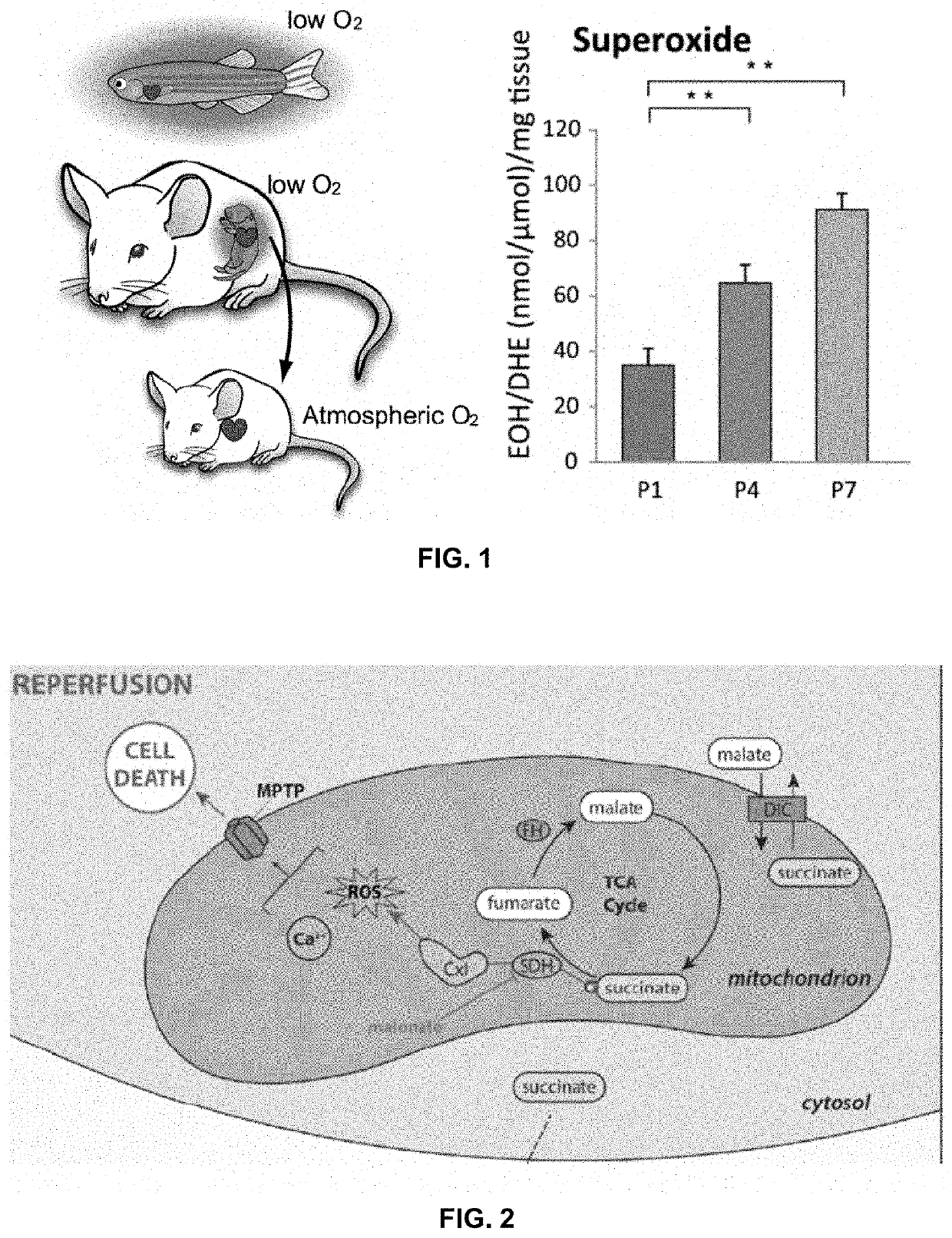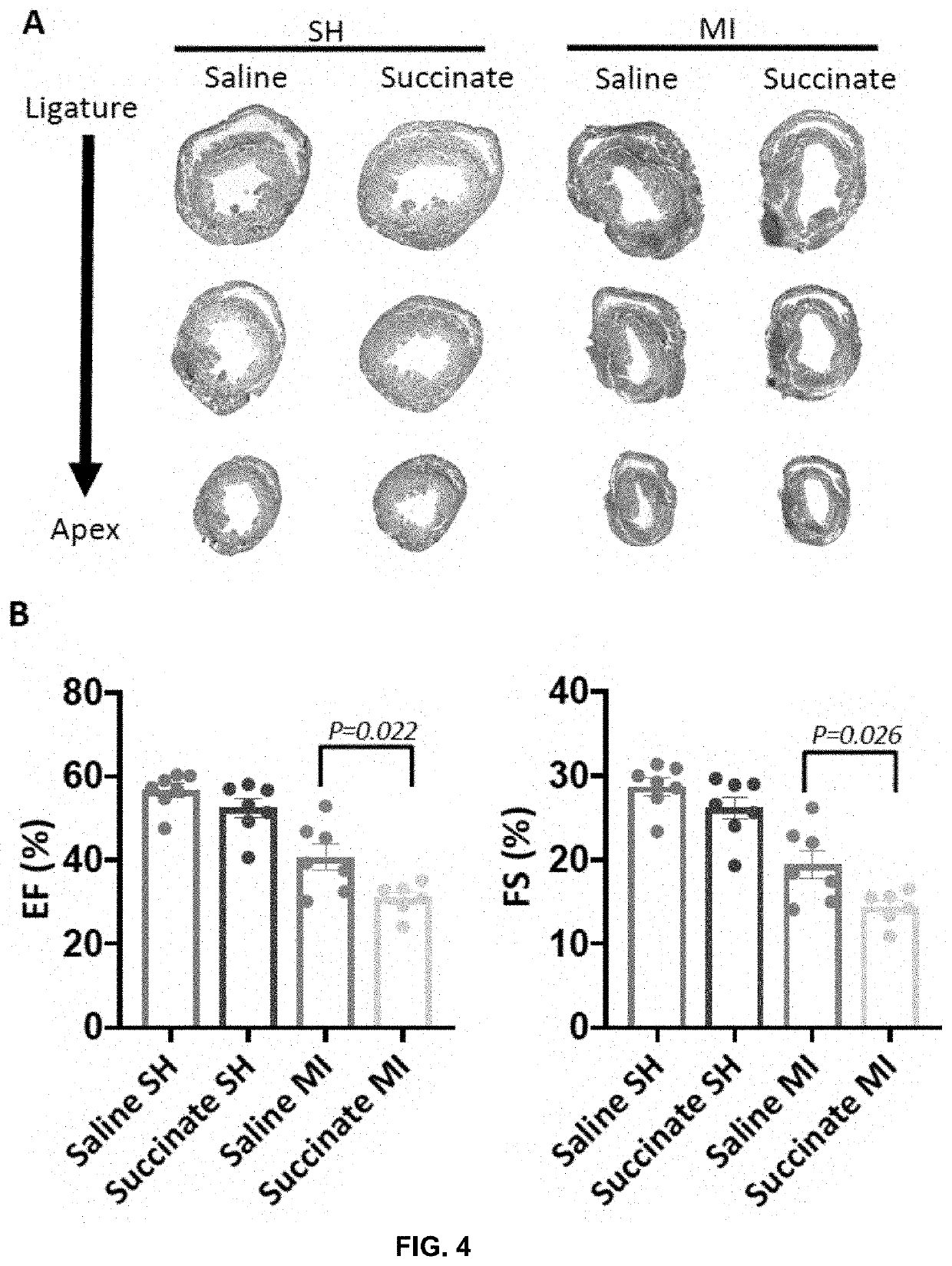Compositions and methods for improving cardiac structure and/or function
a technology applied in the field of compositions and methods for improving can solve the problems of systolic heart failure, loss of cardiac potential, and inability of adult mammalian heart to regenerate following, so as to improve improve the effect of cardiac structure and/or function
- Summary
- Abstract
- Description
- Claims
- Application Information
AI Technical Summary
Benefits of technology
Problems solved by technology
Method used
Image
Examples
example 1
Targeting Metabolism to Stimulate Adult Heart Regeneration
[0086]Cardiovascular diseases are a major cause of morbidity and mortality in the world1. This is due to the inability of the adult mammalian heart to replace damaged tissue following injury. Existing heart failure therapy focuses on prevention of the progressive weakening of heart muscle following injury, and the current best option for end-stage heart failure is transplantation2. However, this remains an impractical approach for most patients due to the surgical complexity of heart transplantations and the limited availability of donors3,4. Thus, novel approaches for regenerating or repairing damaged heart tissue following injury would represent a radically improved outcome. Until recently, complete heart regeneration following injury has been observed only in non-mammalian vertebrates5-8. Recently we demonstrated that neonatal mice are capable of regenerating their hearts following myocardial infarction (MI) for a brief wi...
example 1 references
[0103]1. Writing Group M, Mozaffarian D, Benjamin E J, Go A S, Arnett D K, Blaha M J, Cushman M, Das S R, de Ferranti S, Despres J P, Fullerton H J, Howard V J, Huffman M D, Isasi C R, Jimenez M C, Judd S E, Kissela B M, Lichtman J H, Lisabeth L D, Liu S, Mackey R H, Magid D J, McGuire D K, Mohler E R, 3rd, Moy C S, Muntner P, Mussolino M E, Nasir K, Neumar R W, Nichol G, Palaniappan L, Pandey D K, Reeves M J, Rodriguez C J, Rosamond W, Sorlie P D, Stein J, Towfighi A, Turan T N, Virani S S, Woo D, Yeh R W, Turner M B, American Heart Association Statistics C and Stroke Statistics S. Heart Disease and Stroke Statistics-2016 Update: A Report From the American Heart Association. Circulation. 2016; 133: e38-360.[0104]2. Hashimoto H, Olson E N and Bassel-Duby R. Therapeutic approaches for cardiac regeneration and repair. Nat Rev Cardiol. 2018; 15:585-600.[0105]3. Dhital K K, Iyer A, Connellan M, Chew H C, Gao L, Doyle A, Hicks M, Kumarasinghe G, Soto C, Dinale A, Cartwright B, Nair P, Gr...
example 2
Summary
[0171]Neonatal mouse cardiomyocytes undergo a metabolic switch from glycolysis to oxidative phosphorylation, which results in a significant increase in reactive oxygen species (ROS) production that induces DNA damage. These cellular changes contribute to cardiomyocyte cell cycle exit and loss of the capacity for cardiac regeneration. The mechanisms that regulate this metabolic switch and the increase in ROS production have been relatively unexplored. Current evidence suggests that elevated ROS production in ischemic tissues occurs due to accumulation of the mitochondrial metabolite succinate during ischemia via succinate dehydrogenase (SDH), and this succinate is rapidly oxidized at reperfusion. Interestingly, mutations in SDH in familial cancer syndromes have been demonstrated to promote a metabolic shift into glycolytic metabolism, suggesting a potential role for SDH in regulating cellular metabolism. Whether succinate and SDH regulate cardiomyocyte cell cycle activity and ...
PUM
| Property | Measurement | Unit |
|---|---|---|
| time | aaaaa | aaaaa |
| time | aaaaa | aaaaa |
| time | aaaaa | aaaaa |
Abstract
Description
Claims
Application Information
 Login to View More
Login to View More - R&D
- Intellectual Property
- Life Sciences
- Materials
- Tech Scout
- Unparalleled Data Quality
- Higher Quality Content
- 60% Fewer Hallucinations
Browse by: Latest US Patents, China's latest patents, Technical Efficacy Thesaurus, Application Domain, Technology Topic, Popular Technical Reports.
© 2025 PatSnap. All rights reserved.Legal|Privacy policy|Modern Slavery Act Transparency Statement|Sitemap|About US| Contact US: help@patsnap.com



